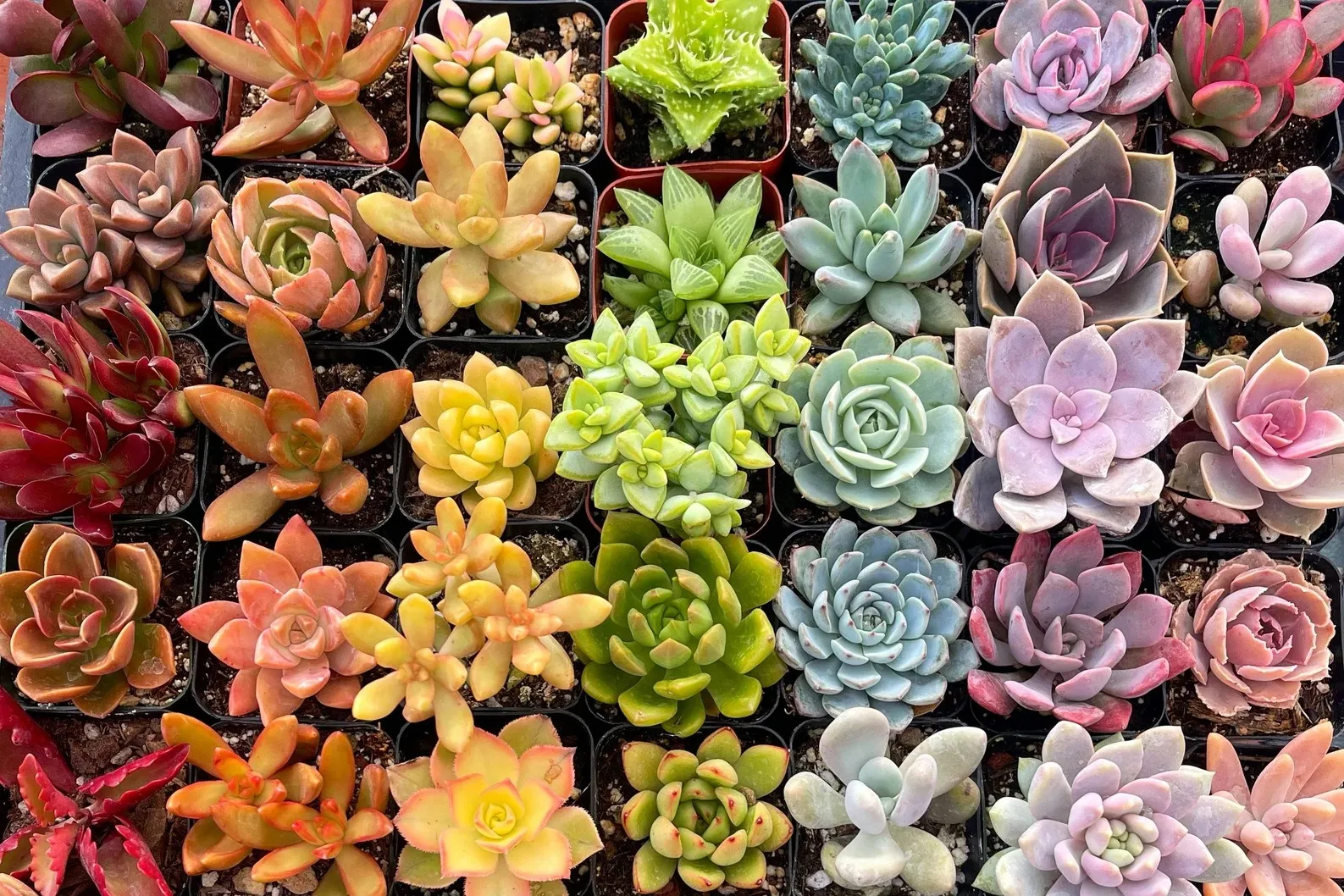Succulents are a diverse group of plants known for their ability to store water in their fleshy leaves, stems and roots. They come in a variety of shapes, sizes and colors and are popular among plant lovers and collectors. Green is the most common color associated with succulents, but these attractive plants also boast an amazing palette of unique and interesting colors that go beyond traditional shades of green. Delve into the world of and explore the fascinating and captivating colors these plants exhibit.
Succulents are known for their water-saving adaptations such as: B. Ability to withstand drought, retain water within the tissue, and have a shallow root system that can absorb water quickly. These adaptations also play a role in the spectacular colors that succulents can exhibit.The pigments that are responsible for the different colors in succulents are often the various pigments such as chlorophyll, carotenoids, anthocyanins, and betalains. It is the result of compounds and can be affected by factors such as sun exposure, temperature and stress.
One of the most attractive aspects of succulents is their ability to change color depending on environmental conditions. For example, some succulents, like Echeveria Pearl von Nuremberg, can display different shades of pink, purple, and blue depending on the amount of sunlight. The leaves turn pink or purple when exposed to bright sunlight, but in low light the leaves may appear bluish green. This color change ability adds a dynamic and ever-changing element to your succulent collection, making them a joy to observe and care for.
In addition to their ability to change color, succulents also exhibit an incredible range of unique and vibrant colors not found in other plant species. For example, succulents such as Kalanchoe ‘Flapjacks’ and Pachyphytum obiferum exhibit silver, lavender and even powder blue hues on their leaves. These unusual colors are often due to the presence of a waxy or powdery coating on the leaves, which reduces water loss and helps protect the plant from harsh environmental conditions.Bloom Or known as farina, the powdery coating provides a stunning contrast with the plant’s fleshy leaves and stands out in succulent arrangements. Additionally, succulents come in warm colors such as reds, oranges, and yellows that add warmth and vibrancy to your succulent garden. Succulents such as ‘Firestorm’ sedum and ‘Roycappie’ aloe are known for their bright red and orange leaves, which darken when exposed to bright sunlight. These warm-toned succulents are highly coveted for their bold, eye-catching look and are popular among succulent lovers looking to add a pop of color to their garden.
In addition to their color-changing abilities and unique warm tones, succulents can also exhibit a wide range of pastel hues, such as pink, purple, and blue. These softer colors are often found in succulents like the Graptopetalum ‘Ghost Plant’ or the Senecio serpens ‘Blue Chalksticks.’ These delicate colors can create a sense of tranquility and elegance in a succulent arrangement and can be a perfect addition to succulent gardens that aim for a softer, more subtle color palette.
The unique colors of succulents also offer endless opportunities for creative arrangements and combinations. With their diverse range
